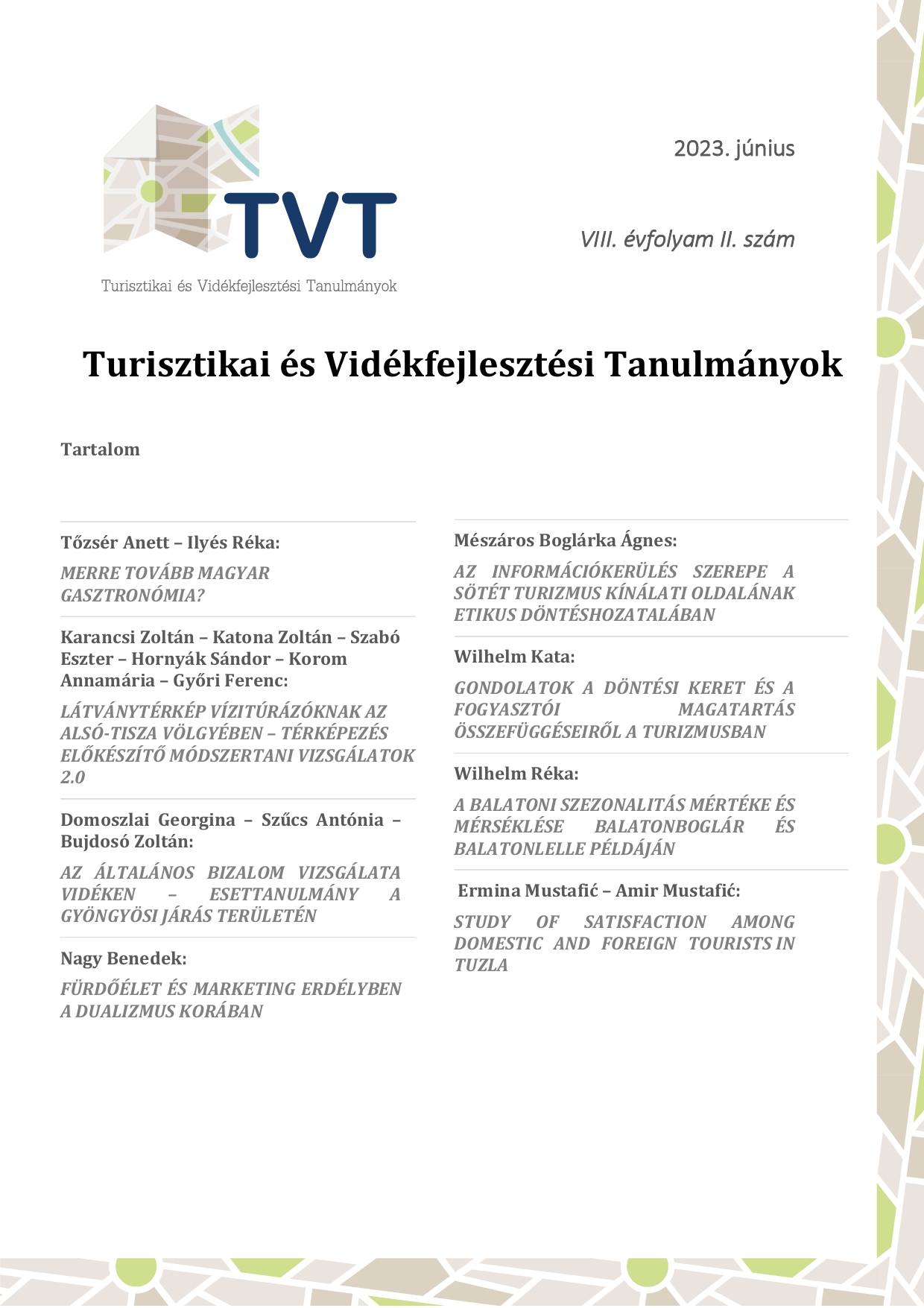A balatoni szezonalitás mértéke és mérséklése Balatonboglár és Balatonlelle példáján
DOI:
https://doi.org/10.15170/TVT.2023.08.02.07Kulcsszavak:
Balaton, turizmus, szezonalitás, Gini-index, fejlesztésAbsztrakt
A Balaton-régió turisztikai szezonalitása már régóta tárgyalt kérdéskör, de még a 2020-as évek elején is jelentős problémát okoz a tóparti települések gazdaságában. Az utóbbi években/évtizedekben tudatos fejlesztésekkel elkezdték a városok a vendégérkezéseket részben az eddigi főszezonon kívülre terelni. Ennek két alapvető eszköze a szálláshelykínálat bővítése olyan egységekkel, amelyek egész évben igénybe vehetőek, illetve a települések eseménynaptárának bővítése őszi, téli és tavaszi hónapokra eső rendezvényekkel. E fejlesztések eredményeit és összefüggéseit vizsgálom Balatonlelle és Balatonboglár példáján.
Kutatásom során a Gini-index segítségével megvizsgálom a vendégforgalmi adatok alapján, hogy az utóbbi években mérséklődött-e a két város turisztikai szezonalitása, illetve összehasonlítom a tendenciákat más balatoni településekkel. A programturizmusra vonatkozóan feltárom, hogy milyen eseményekkel próbálják a turistákat a főszezonon kívül is bevonzani, továbbá értékelem ezek eredményességét. Igyekszem megfontolandó fejlesztési irányokat is meghatározni, amelyek potenciális eszközök lehetnek a jövőben a térség – nem csak a két település – szezonalitást illető imázsváltoztatására.


